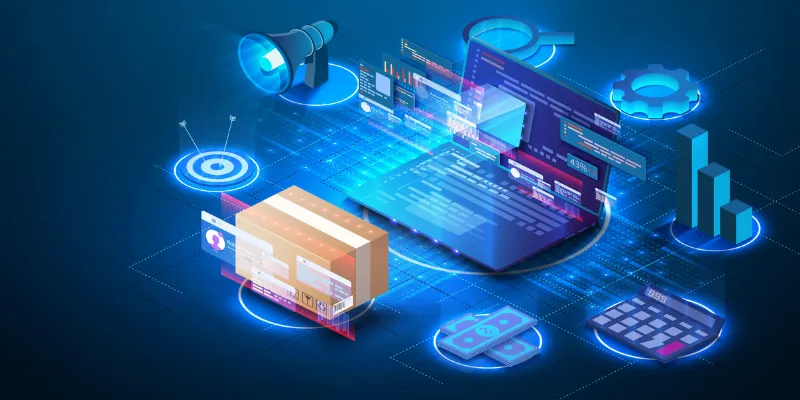Sustainability in the logistics sector: time to embrace tech
The mission to control rising temperature and make sustainability a part of our daily routine is a global phenomenon. However, most of the industries are still lagging behind the goals including logistics.
Sustainability is not uncharted territory for the transport and logistics industry, yet it remains a difficult terrain to navigate. While the quality of vehicles has improved due to technological advances, the coronavirus pandemic presented new sets of challenges in the supply chain domain and for transporters. Amidst old and new challenges, the industry is leveraging advanced technologies such as Artificial Intelligence (AI), and creating robust transport chains to adapt to the changing climate and environmental conditions.
The mission to control rising temperatures and make sustainability a part of our daily routine is a global effort. However, most of the industries, including the logistics sector, are still lagging behind these goals. Some of the biggest challenges in this mission have been cost, operational hassles, and most importantly, a shift in mindset. Many a time, companies have been slow to react.
However, with more awareness around the concept and its long-term impact, customers are becoming more discerning: For instance, B2B customers expect real-time transparency, flexibility, and reliability.
The way forward
While the traditional methods of operational excellence, cost efficiency, and better vehicles will always play a role, times such as these demand digitalisation and AI-enabled vehicles that will transform the logistics industry. Especially as digital tools and platforms can help to conserve resources.
The biggest factor that digitalisation will bring to the table is transparency. Transporters will have access to reliable data on emissions, resources, and costs, thereby helping them in their efforts to achieve carbon neutrality, or even become carbon positive.

Now is the right time
The year 2020 has been disruptive across industries the world over. This has meant that businesses have had to be quick on their feet to adapt to new challenges. The good news is, AI has never been so accessible and affordable. The logistics industry has an advantage over other segments in the fact that the nature of the industry offers a natural framework for introducing and scaling AI.
It is another huge plus that deep internet penetration across India and the rapid digitalisation even in Tier II and III cities has brought us so much closer to top-class technologies.
As a matter of fact, trucking, rail and ocean freight have been tracked by satellite through telematics for many years now. But such data wasn’t utilised to its full capacity. Now, AI is regularly used for predictive analytics in relation to intelligent transportation and route planning and demand planning. Warehouse operations are also being integrated with augmented guidance and robotic systems to scale inventory management.
The data sourced through AI is easily accessible, and it is being used in a way to bring about maximum benefit for the logistics sector. Today, there has been a considerable rise in the speed of how data is created. This data ensures that collected information can be leveraged in actionable ways.
Introducing all the data from the supply chain, analysing it, identifying patterns and providing insights to every link of the supply chain is seen as vital steps forward. To give just one example, AI-sourced data is a huge advantage when it comes to monitoring temperature-controlled trucks delivering perishable items or medicines/vaccines that will be rendered useless if the temperature nudges up a couple of degrees.
With all this technology, logistics firms will have complete visibility and transparency over all stages of the delivery. This is vital because transporters need to have a comprehensive picture of every stage of the delivery. Previously, the only way to get this complete picture was to make a phone call to the driver! Now, with a click of a few buttons, transporters get access to immediate real-time information which helps them in ensuring an undisrupted and optimum logistical process.
A recent collaborated report by DHL and IBM on the implications and use cases for the logistics industry said that logistics firms were uniquely poised to benefit by introducing AI into all aspects of the supply chain.
According to the report, “One of the most under-utilised assets in the industry is the high volume of data that supply chains generate on a daily basis. "
This data is both structured and unstructured, and AI will enable logistics companies to exploit it. In addition, as many logistics companies around the world embrace digital transformation, transitioning away from legacy enterprise resource planning systems to advanced analytics, increased automation, and hardware and software robotics, and mobile computing, with the next obvious step in the increasingly digital supply chain, is to apply AI.”
Real-time GPS data, weather data, fleet, and personnel schedules can be embedded into one overarching system looking at historical trends so that optimised routes can be selected for delivery. Using both past and real-time data, AI can provide a forward view to help shape the logistics industry.
Technology will make logistics business faster and even more agile while helping transporters achieve sustainability goals. It’s a win-win situation for everyone, from customers to the logistics industry.
Edited by Anju Narayanan
(Disclaimer: The views and opinions expressed in this article are those of the author and do not necessarily reflect the views of YourStory.)








